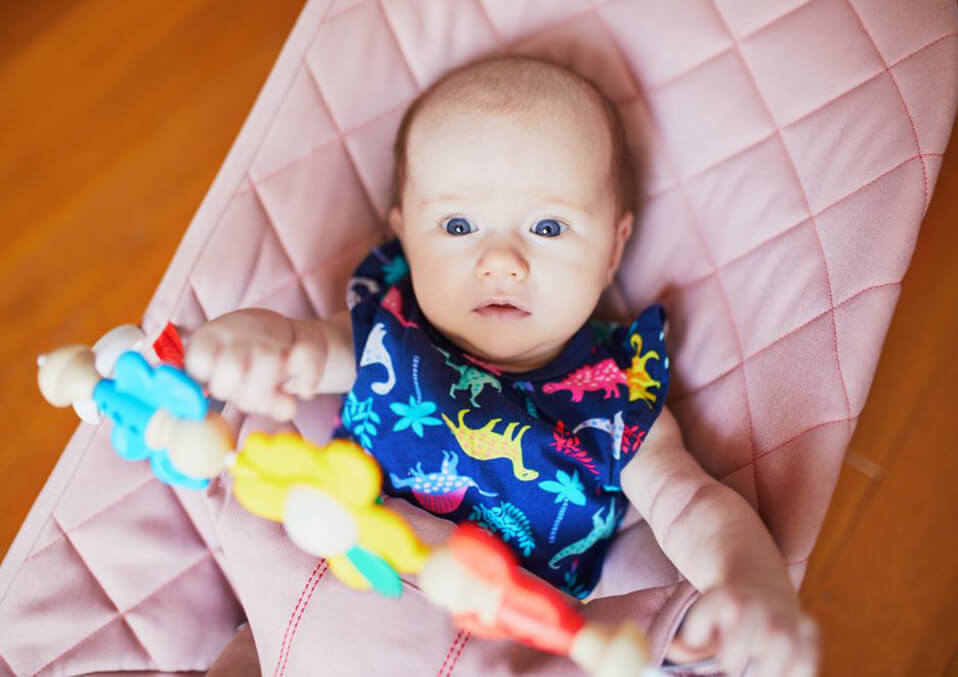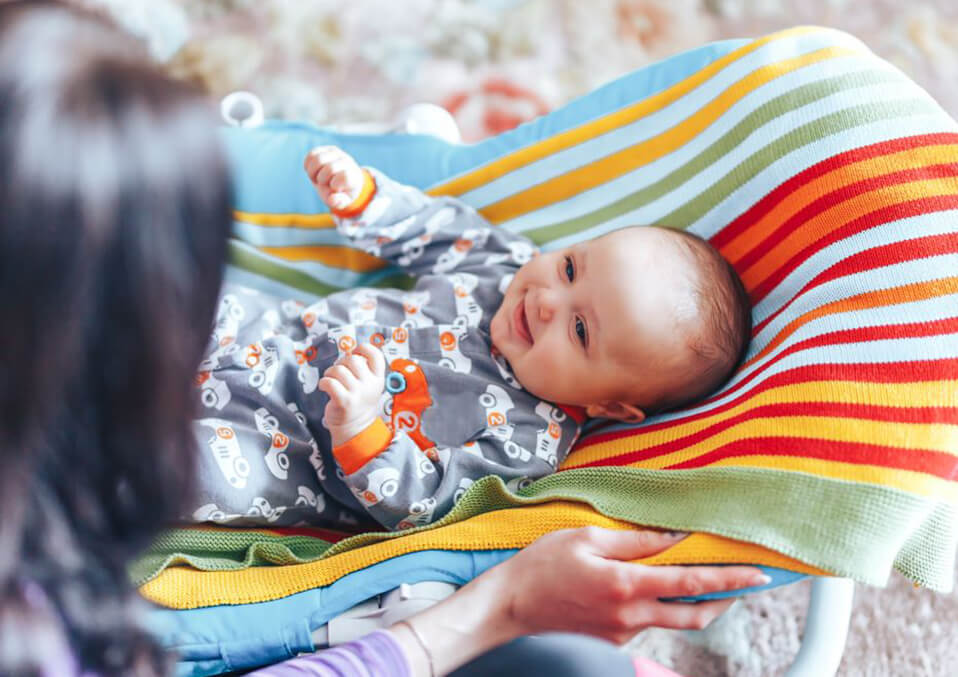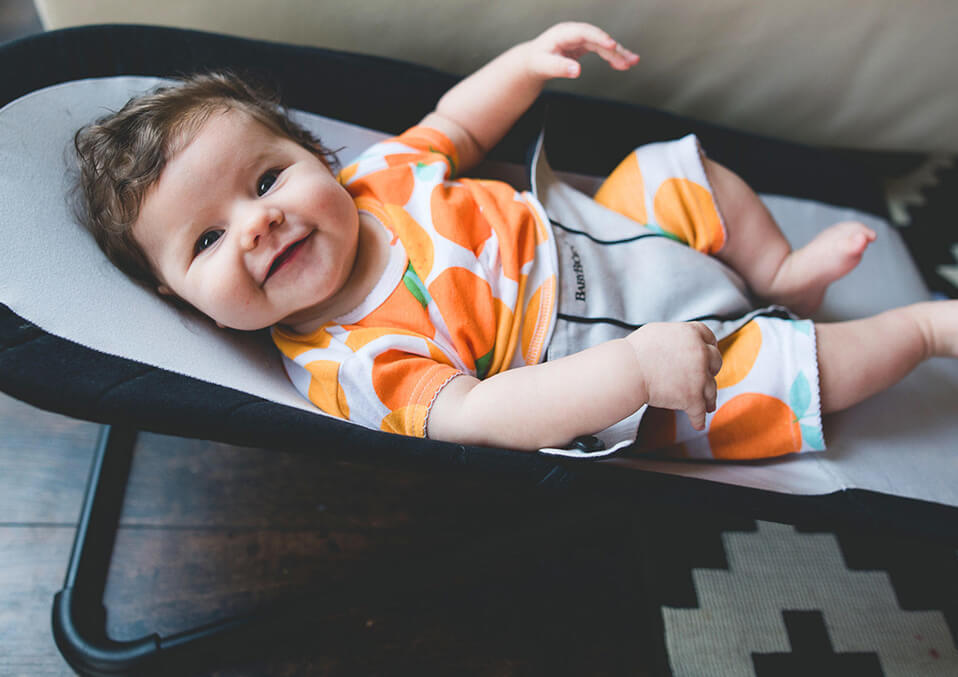
A baby bouncer seat has been a popular gadget that most working mothers use. It is flexible and handy. You can easily buy any design with various specifications in any baby care store. The piece of equipment is helpful, especially when you need to finish a work task over your computer while at home, take a shower or grab something to eat. You can also bring equipment anywhere because it is too light and mobile.
But the question is, when can a baby use the bouncer?
Take a look at this article for you to understand more in-depth about the bouncer seat, its appropriate use, and safety tips.
One thing that moms love about the bouncer seat is its versatility. The baby can be placed in a recline semi-upright position while enjoying and staring at the toys hanging. The baby will likely make movements when getting bored. The bouncer will respond to the kicks of the baby as it will move up and down, and that will give a satisfying desire movement for the baby. The design and material that the manufacturers use can be calming and relaxing until the baby can get to sleep.
The bouncer comes with a range of designs and models. You can pick to buy a modest model that moves when your baby moves or equipment that vibrate, play music; baby easily moves around, can hold electronics and accessible to bring when traveling. Some bouncer is made of wood, plastic, and metal.
Bouncers have a wide range of carrying capacity. There is equipment that can hole weights at 25 pounds, and some can carry 30 pounds. There is also high-end equipment that small adults can even sit in them and holding up to 130 pounds.
Categories of baby bouncers you can consider to buy

Baby bouncers are offered in variants on three main designs:
1. Bouncer chairs
They are intended for very young infants. The baby can use the bouncer even if he still could not sit-up and hold his head up. The design allows the baby to lie in a reclining position, and they can comfortably see their surroundings. It also has a safety strap to prevent the baby from sliding or rolling out.
Potential risks

You must be cautious about the proper placement of the baby to avoid compromising the airways. Young infants are not yet capable of controlling their muscles and head movement. If the infant is settled too deep in the comfortable seat, the baby’s chin will likely tuck close to the chest, which leads to the difficulty of breathing.
Babies will always find a favorite position either due to they find comfort or they enjoy what they see as an object in a room. The bones in the head of the infant are still soft were lying in the same position in long periods can develop a flat spot on the head.
How to make it safe?
- Never leave the baby and supervise your baby when you place the bouncer in high ground
- Do not let the baby sleep in the bouncy chair
- Use and place the bouncer chair only on the floor
- Limit the time of use of the bouncer chair at 20 or 30 minutes at a time
- Check if the baby’s chin is not tucking that is too close to their chest
- Do not let the baby’s head place on one side for the rest of the time. Lay the baby’s head alternately in all sides. You can try putting a stimulating object that your baby will be looking at in all sides of the chair
- If the baby can already sit up, the bouncy seat is no longer safe to use
2. Sit-in bouncers

These are also called as ‘jumpers’ and is typically the favorite equipment for babies. Babies can move in a semi-support upright position. They can be able to touch and control the toys in the tray, bounce or jump and look around the room. The equipment is made of a flexible structure with several springs that work as the suspension. The seat is designed to swivel for the baby to be able to turn around in any direction and lets them access the toys.
Potential risks:
Sit-in bouncers are suitable for babies as young as four months old. The babies at this age have not yet wholly developed their core muscles. The sit-in bouncer can lead babies to adopt the wrong body position to hold themselves upright. Babies can find comfort in placing the weight in incorrect parts of the pressure which results in imbalances.
Too much time in the use of bouncer seats can cause delays of essential skills development such as rolling, crawling and walking.
How to make it safe?
- Make a rule that the maximum use of the bouncer is up to 20 minutes at a time once or twice a day only
- You need to supervise closely by making sure that the baby’s foot position is correct. Always check the proper adjustments of the bouncer that is fit to the baby’s height
- Closely monitor the playtime and take the indications of exhaustion or over-stimulation
- Allow more time for floor play
- Never leave your baby in the bouncer, give time to talk to your baby while they are in the bouncer, and play together to avoid developmental delays
3. Door bouncers
The door bouncers are designed to be attached in a doorway frame using the clamps. The baby sits in the seat suspended in the stretchy cords. The baby’s feet are straight to the floor and the baby is able to jump and bounce. This type of bouncer can be a fit if you have excellent extra space at home.
Potential risks
The baby can jump hard and lead to hitting in the sides of the doorway. It can be potent to hazards around. Hence, most of the reported injuries are caused by breaking or detaching of clamps from the door frame that leads to falling off the baby.
How to make it safe?
- Before using, check if the clamps are fastened, the door frame is sturdy, and the cords are correctly in place
- Never lose your eyes to you, baby, remove them immediately if indications of over-stimulation or exhaustion are happening
- It is best to install the bouncer in the widest door at home
- Set the time limit spent in the bouncer ( maximum of 20 minutes at a time)
Read also:
- How To Carefully Play With a Newborn?
- When Children At Daycare Bite: What Are The Risks?
- When To Start Looking For a Daycare To Look After Your Children


